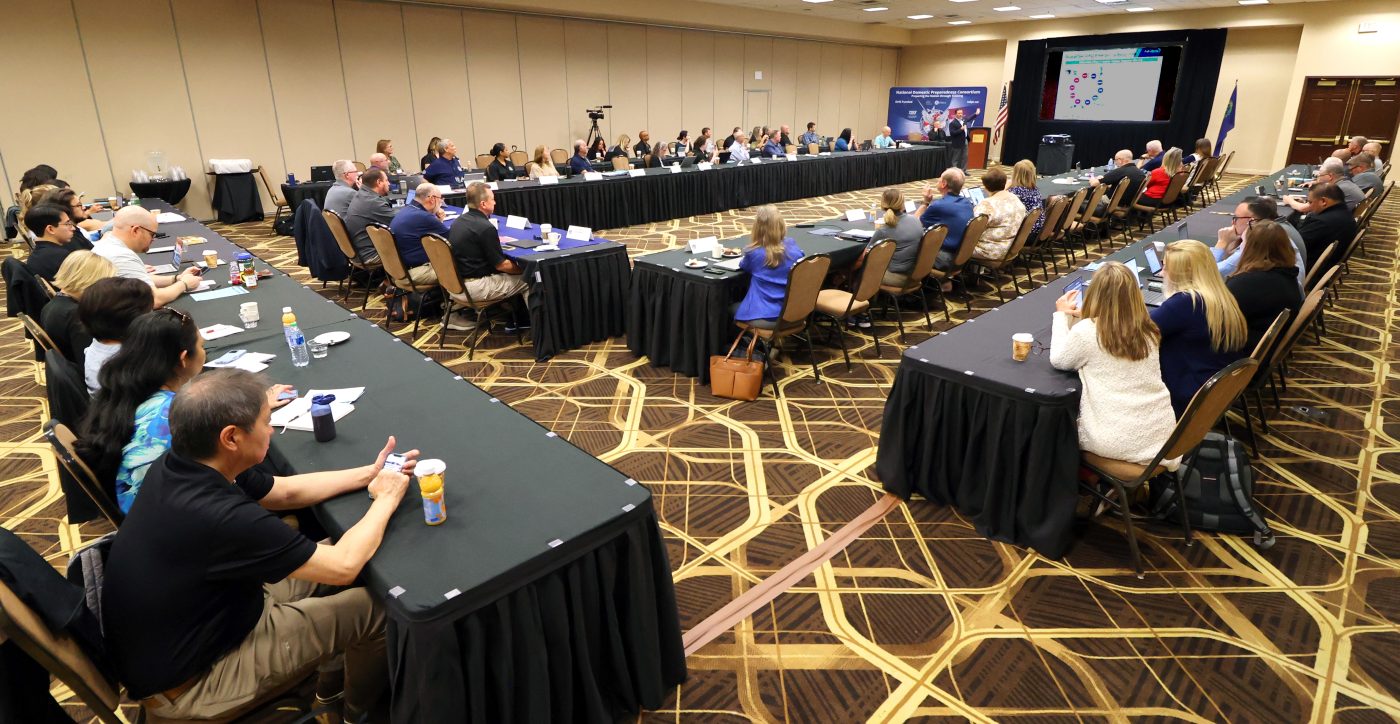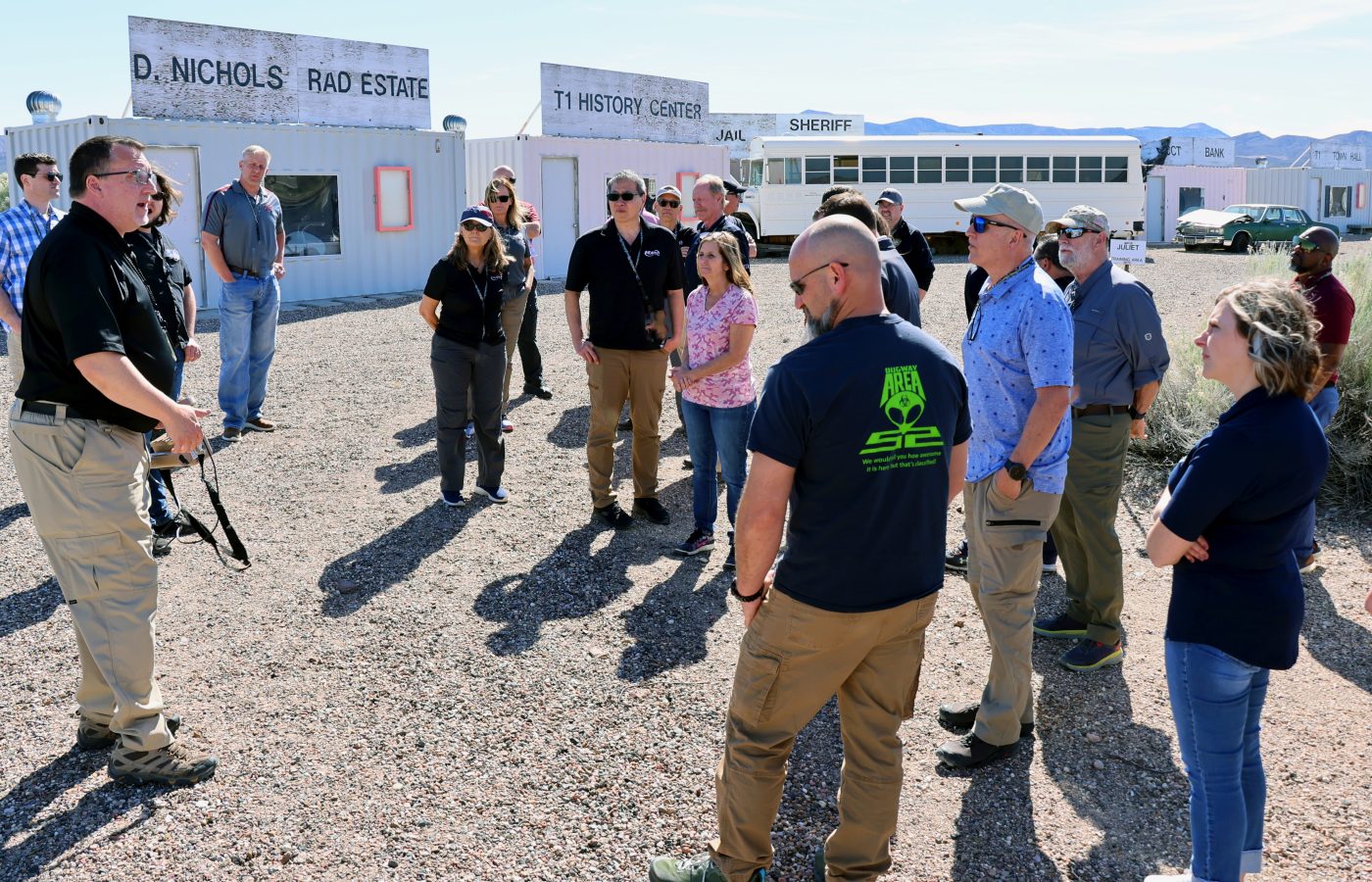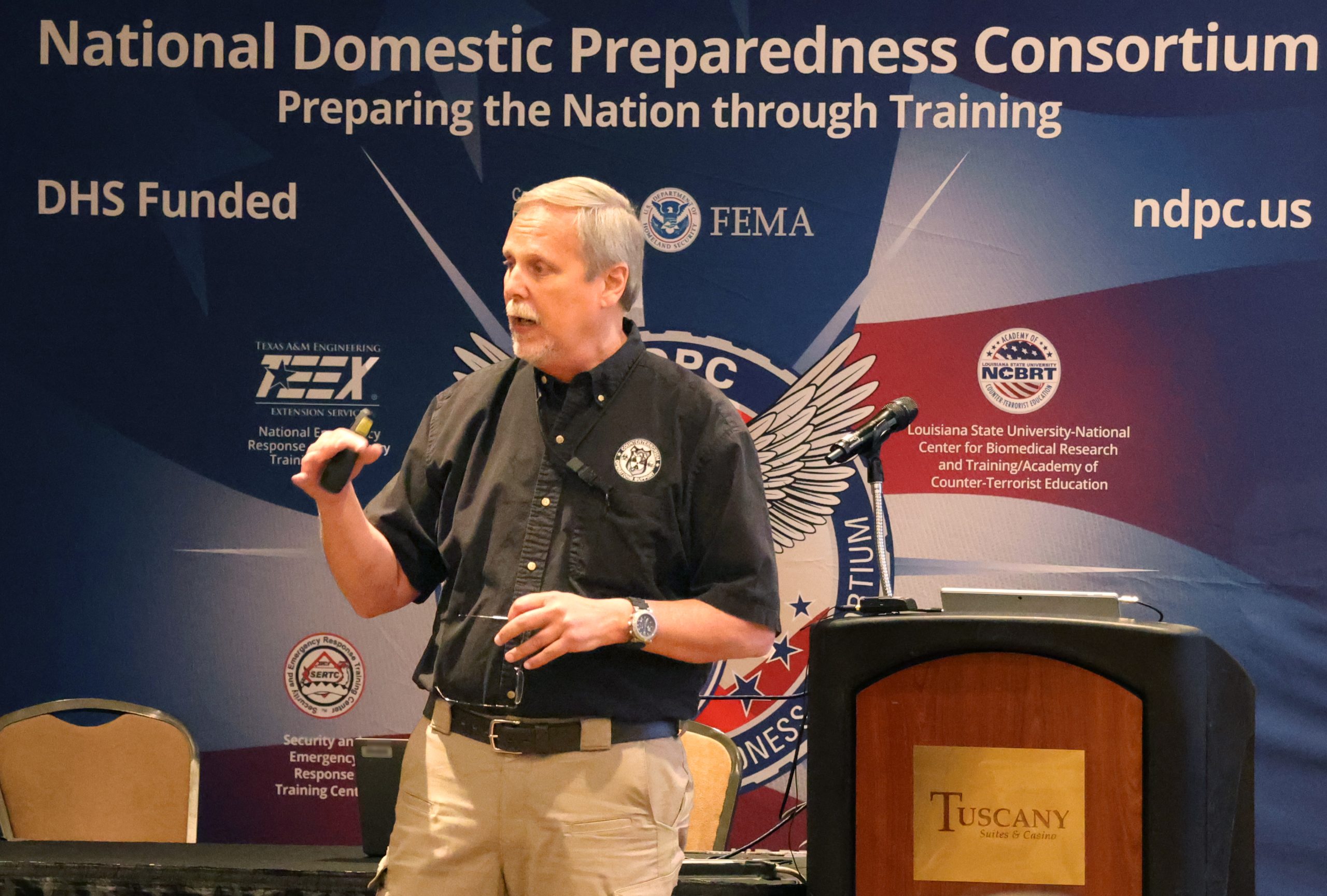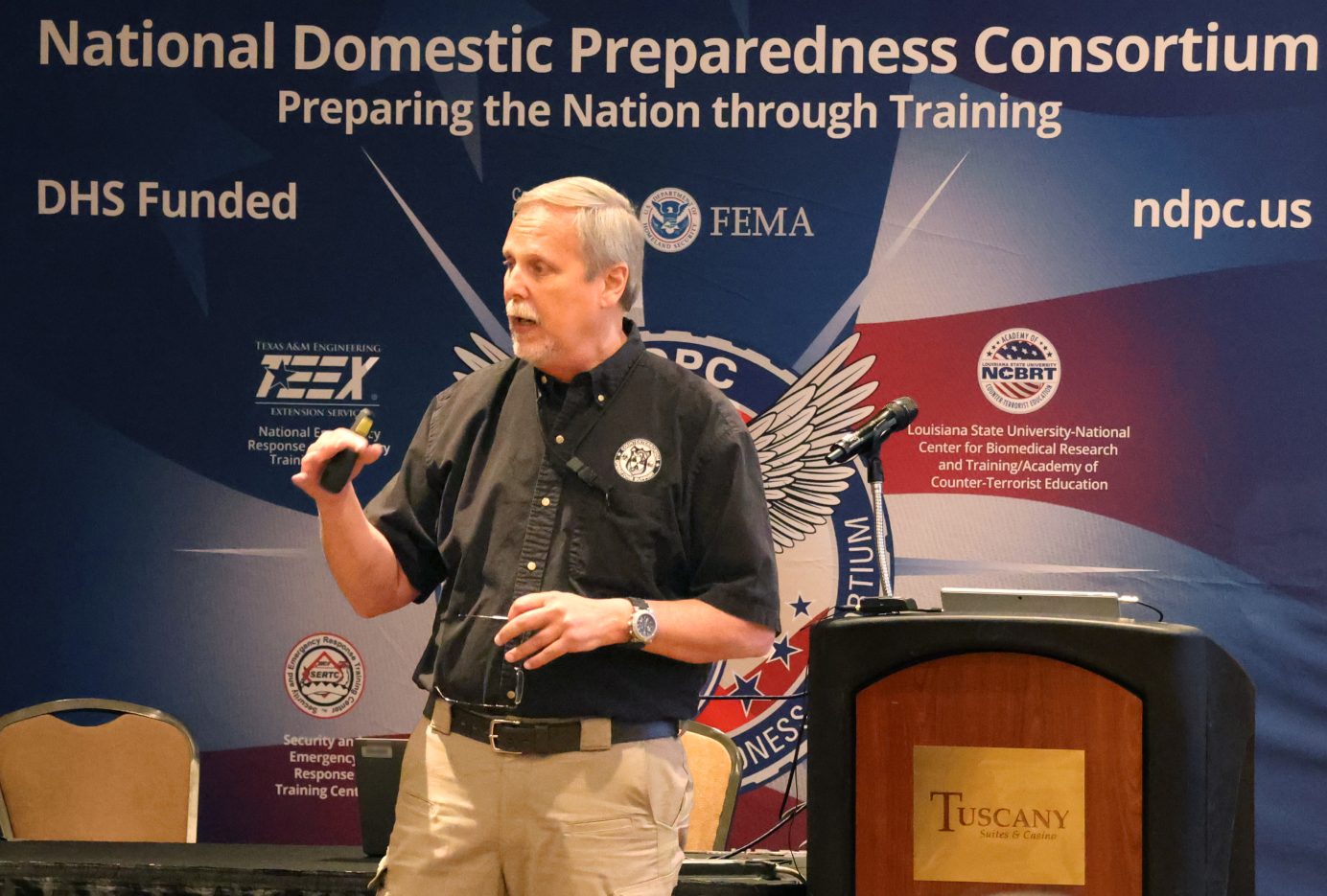The Department of Energy’s National Nuclear Security Administration’s (NNSA) Counterterrorism Operations Support (CTOS), based at the Nevada National Security Sites (NNSS), recently hosted the National Domestic Preparedness Consortium (NDPC) semi-annual meeting in Southern Nevada.
“The best and brightest from all the different swim lanes come together to make this extremely powerful team,” said NNSS Vice President Roger Rocha while sharing an overview of the NNSS and its mission-critical work at the meeting. “It’s an honor to be part of this team.”
CTOS is a principal and founding member of the NDPC, which was established in the aftermath of the 1995 Oklahoma City bombing. Funded by the U.S. Department of Homeland Security/FEMA National Preparedness Directorate, the NDPC’s other members include:
- The Center for Domestic Preparedness
- The New Mexico Institute of Mining and Technology
- Louisiana State University’s National Center for Biomedical Research and Training/Academy of Counter-Terrorist Education
- Texas A&M University Engineering Extension Service’s national Emergency Response and Recovery Training Center
- The Transportation Technology Center, Inc.
- The National Disaster Preparedness Training Center at the University of Hawaii
The group initially identified weapons of mass destruction as one of its biggest threats, and later expanded its focus and training to include broader radiological and nuclear threats. The group’s collective skills, experience, and expertise proved especially useful and critical after the 9/11 terrorist attacks.
To remain prepared, the NDPC meets regularly to evaluate its trainings for first responders and to ensure that its topics and lessons are relevant and up to date. Attendees said that collaboration is critical because of the varied and unpredictable nature of crises and circumstances.
“The training activity that we do is a contact sport,” said Vice President for Special Research Programs at New Mexico Tech and NDPC Chairman Van Romero. “There’s a lot we can do virtually but there is a lot that you really need that interaction [for].”

While much of the three-day meeting occurred in Las Vegas, conference attendees were also able to go on a specially tailored tour of the Nevada National Security Site, stopping at the Joint Actinide Shock Physics Experimental Research Facility (JASPER), Frenchman Flat, Sedan Crater, Apple II House, and the T-1 Training Facility.
At the T-1 Training Facility the group saw what it takes to complete one of CTOS’s rigorous training programs. Each member of the NDPC has a unique area of expertise, and CTOS focuses on radiological response and prevention. The T-1 Training Facility aims to create a realistic, post-detonation experience for trainees by replicating incidents including an airplane crash and train derailment in an area where an actual nuclear test took place.

“Because radiation is invisible, you can’t detect it with any of your senses,” said CTOS Operations Support Manager Rob Ryan. “You really have to experience it. And that’s one of the things that sets our training apart is we have to make it very realistic so that it’s very believable. You could go out and simulate a lot of things, but people really won’t have the confidence in their equipment and their ability to interpret the equipment without actually going out and doing it themselves.”
While Romero has toured the Site several times prior, he says each time he visits he learns something new, calling the Site a “vast resource.”
“When the NDPC was first formed, we looked at the big threats out there,” said Romero. “At the time, it was weapons of mass destruction (WMD). When you look at WMD, radiation plays such a critical role in protecting the homeland. Our terrorists, the enemies—they want to inflict maximum damage with minimal effort on their part and certainly a radiation attack, whether it be a nuclear device or a dispersion device, is something that would cause havoc in our nation, so it’s important to be prepared for that.”



